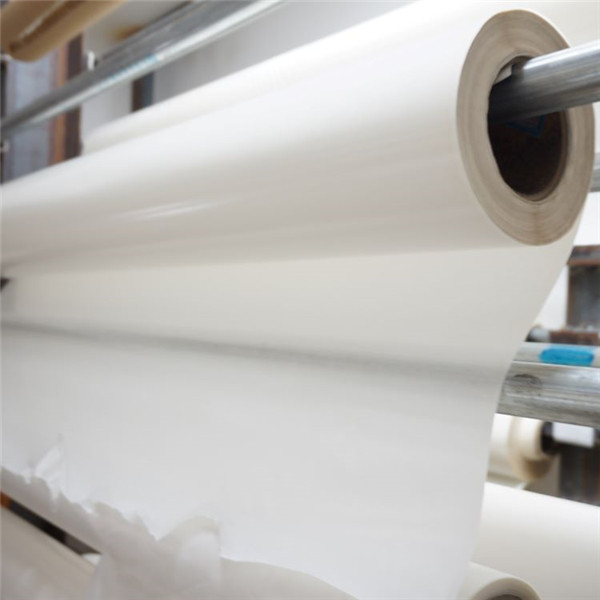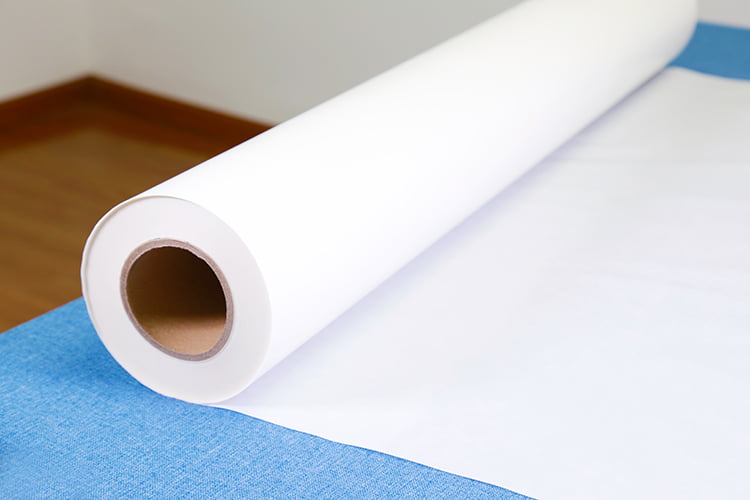Although there are a number of distinct types of hot melt adhesive films, the EVA hot melt adhesive film and the Low-melting point TPU adhesive film are the ones that are used on a regular basis. There are a number of different types of hot melt adhesive films. There are also a great many variants of hot melt adhesive films available to choose from. In addition, there is a wide selection of hot melt adhesive film varieties that can be purchased. In addition, there is a hot melt film that is made of PA, a hot melt film that is made of PO, and a hot melt film that is made of PES. All of these films are available. Recent correspondence from a customer included the following question: "Out of PO hot melt film and PES hot melt film, which one would you recommend I use?"This question, which is typical of someone who is not familiar with hot melt film, requires an answer that is difficult to provide in a way that will satisfy the person asking it.
It is possible for hot melt films made of either PO or PES to adhere very well to the material to which they are applied, or they may not adhere at all, depending on the nature of the material to which they are applied. This is because the adhesion of the hot melt films is determined by the nature of the material to which they are applied. On numerous occasions, people have attempted to draw parallels between hot melt film and various types of medication. In the same way that the condition can be treated by administering the appropriate medication, the adhesive can be applied to the material in order to create a secure bond between the two pieces of material. This is not only the case for hot melt films, but it also holds true for the adhesives industry as a whole in general.

The conventional material types of hot melt adhesives that are included in the hot melt adhesive product system include thermoplastic urethane (TPU) hot melt adhesive film and polyether sulfide (PES) hot melt adhesive film. Both of these types of hot melt adhesive films are comprised of thermoplastic urethane (TPU) and polyether sulfide (PES). They are both hot melt adhesive films made of the material PES, and their purpose is the same, which is to solve the problem of bonding and compounding of materials in the production molding process, use method, and other processes. Both of these adhesive films are made of the material PES. The fact that they both serve this purpose is another way in which they are comparable. Aspects can, for the most part, be substituted with and understood in terms of one another. What other differences can be found between the two materials, besides the components that are present in both of them that are the same? After all, there is not going to be a circumstance in which two distinct types of material are a perfect match for one another.
1. a variety of distinct materials and raw materials from which one can select:
The first point of differentiation between the two is established by the utilization of distinct raw materials as the basis for the differentiation. Polyurethane is the primary component of the thermoplastic polyurethane hot-melt mesh, which is also known as TPU hot-melt mesh. This mesh is an elastomer material and goes by the name thermoplastic polyurethane hot-melt mesh. Because of the disparate melting points, the color will additionally be categorized as either having a high transparency or falling into the category of having the appearance of being transparent, depending on which of these two characteristics it possesses. The copolyester, which is a type of material that is white in color and appears translucent, is the primary component of the PES hot melt adhesive mesh. This material is also the name of the material.
2. Each of the following is unique from the others in terms of its coziness and pliability:
There is still a significant gap between the two options in terms of the level of coziness and suppleness they provide. When it comes to being comfortable and having a high level of softness, the TPU hot-melt mesh film performs exceptionally well. It possesses a great deal of elasticity and performs exceptionally well overall. The performance of PES hot-melt adhesive mesh in terms of softness and comfort is relatively poor, and it is significantly lower than that of TPU hot-melt mesh. Compared to TPU hot-melt mesh, the performance of PES hot-melt mesh is significantly worse. This is due to the fact that the primary raw material used in the production of PES hot-melt adhesive mesh is a polymer material that does not exhibit any elasticity. The applications that could be found for Low-melting point TPU adhesive film mesh are consequently a great deal more varied and extensive than those that could be found for PES hot melt mesh. This is due to the fact that TPU is a more versatile material.
3. The distinction between the resistance to wet cleaning and the resistance to dry cleaning is as follows:
Similar to that of PES hot-melt adhesive film, the water-washing resistance of TPU hot-melt film is comparable to that of PES hot-melt film. PES hot-melt adhesive mesh film, on the other hand, has a water-washing resistance that is noticeably superior to that of TPU hot-melt film. On the other hand, the washing resistance of TPU hot-melt mesh film is able to fulfill the requirements for washing resistance that are mandated by the vast majority of industries. This is the case because the washing resistance of this film can withstand repeated washings. While the performance of the TPU hot-melt mesh film in terms of its resistance to dry cleaning is below average, the dry cleaning resistance of the PES hot-melt mesh film is both good and satisfactory. In contrast, the performance of the TPU hot-melt mesh film in terms of its resistance to dry cleaning is below average. This is because the PES hot-melt mesh film is constructed out of polyethylene terephthalate (PET), which is the reason for this result.

4. Variations in the ability to withstand temperatures that are extremely high:
TPU hot melt film has a temperature resistance of minus 30 degrees, whereas PES hot melt adhesive film has a temperature resistance of over 120 degrees. The low temperature resistance of PES hot melt adhesive film is minus 30 degrees. The resistance of PES hot melt film to temperatures as low as minus 20 degrees is significantly lower than the resistance of TPU hot melt film to temperatures as high as 110 degrees. The resistance of TPU hot melt film to temperatures as high as 110 degrees is significantly higher.
5. There is a wide range in the temperature at which various substances will begin to melt:
The melting point type of TPU hot melt film is higher than that of PES hot melt adhesive film, and the melting point span is relatively large, basically encompassing both high and low temperatures. In addition, the melting point type is higher than that of PES hot melt adhesive film. Furthermore, the type of melting point is higher than that of PES hot melt adhesive film. In addition, the melting point type is one that possesses a value that is greater than the melting point type of the PES hot melt adhesive film. The lowest melting point that can be reached is 65 degrees, while the highest melting point that can be reached is 180 degrees. There is a large margin of variation in the possible melting points. For the PES hot melt adhesive mesh to melt, a temperature of approximately 110 degrees Fahrenheit is required, and the temperature range is not very large!

